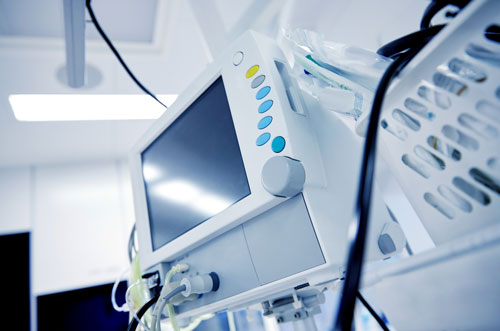The regulation of air humidity in hospitals is extremely important for the success and maintenance of the entire facility. First and foremost, humidity is regulated to protect patients from nosocomial infections (hospital origin) and prevent the spread of other infections. Medical machines and equipment are expected to work when required and may be defective without the control of humidity. Lastly, avoiding dry air will help maintain an acceptable level of comfort for the well-being of both patients and medical staff.
Humidity to Preserve Patient Health
The most important impact that air humidity has in hospitals and medical facilities is the protection of patients from bacterial attacks. There are normally tons of pathogens hospitals, and preventing the spread of these microorganisms is beneficial to a patient’s health.
Studies show that rooms under 40% relative humidity (RH) can cause water molecules to rapidly lose 90% of their water volume, resulting in airborne bacteria that floats around and can reach another host. However, if the RH is between 40-60%, the water droplets will maintain their size and will predicate much quicker. This eliminates the formation of airborne bacteria.

Guarantees Correct Functioning of Medical Machinery
One of the biggest concerns with equipment and RH is the formation of electrostatic discharge. This happens everywhere, but is even more important in hospitals because it may be the life or death of a patient if the equipment malfunctions.
Electrostatic Discharge (ESD) is a phenomenon that occurs when two objects of different charges are brought together, generating a static charge between the two. In a hospital environment, ESD can occur between two different equipments, or equipment and human contact. Although the voltage may not even be felt by a person, it can still cause serious damage to the equipment!
Once again, humidity management is the suitable tool to solve this problem. Water in the air helps lower air resistance when a current passes, allowing for the charge to disperse amongst the water of lower charge potential. The formation of a thin layer of water also helps spread the charges on contact with medical machinery.

Ensure Well-Being and Comfort
Comfort can be described as the sensation of physical and mental well-being of a person within their environment. In a hospital, the general well-being of a patient and all medical staff is extremely important. This allows for the “stress and nerves” to be calmed before procedures, or even if the patient is not too fond of hospitals. A suitable level of RH prevents excessive skin, eye, and respiratory tract dryness. This allows for the patients and personnel to breath and perspire more easily.
Conclusion
Air humidification in hospitals greatly benefit the patients, medical staff, medical machinery, and overall comfort of all people. There are hospital humidification systems that are built to specifically maintain the perfect RH level, and requires maintenance to keep the environment stable and free of bacteria and ESD. Usually these systems humidify fresh air in the air vents as opposed to directly in the room, so the entire hospital is at a constant RH at any time of the day.
If your hospital or medical facility is looking for a humidification system, it would be best to check out our article on the differences between Cool Mist and Warm Mist Humidification. There you will learn the benefits of each, and why it might be best to use ultrasonic humidification in your hospital.
Reader Interactions